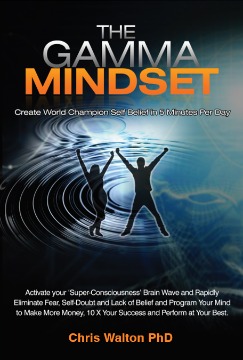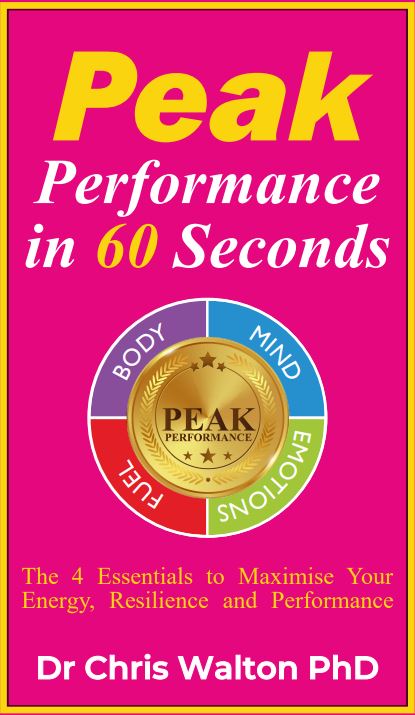In the labyrinth of life’s challenges and opportunities, the lens through which we view the world plays a pivotal role in shaping our experiences. This lens, often referred to as our mindset, is not fixed but malleable—a tool that, when wielded with intention, can become a transformative force.
This article explores the profound concept of shifting perspectives and delves into the transformative mindset strategies that empower individuals to navigate the complexities of life with resilience, creativity, and a sense of purpose.
Understanding the Power of Perspective
Perspective is the unique mental framework through which we interpret and make sense of the world. It is the culmination of our beliefs, experiences, and the stories we tell ourselves. Our perspectives influence not only how we perceive challenges but also the possibilities we envision. Shifting perspectives involves a conscious effort to alter this mental framework, opening up new avenues of understanding and response.
The Art of Mindful Awareness
At the core of shifting perspectives lies the art of mindful awareness. Mindfulness, rooted in ancient contemplative practices, involves paying attention to the present moment without judgment. In the context of mindset, it means becoming acutely aware of our thoughts, emotions, and reactions. By observing these mental patterns without attachment, individuals gain the ability to choose their responses rather than reacting impulsively.
Mindful awareness allows us to identify habitual thought patterns that may be limiting or self-defeating. For example, recognizing negative self-talk or limiting beliefs is a crucial step in understanding the need for a shift in perspective. Mindfulness practices, such as meditation and mindful breathing, provide practical tools to cultivate this heightened awareness.
The Empowering Effect of Gratitude
One potent strategy for shifting perspectives is the cultivation of gratitude. Gratitude is not merely a fleeting emotion; it is a mindset that involves recognizing and appreciating the positive aspects of life. When faced with challenges, a gratitude mindset reframes the narrative by focusing on what is going well rather than what is going wrong.
Gratitude journaling is a simple yet powerful practice. Taking a few minutes each day to jot down things one is grateful for can have a profound impact on overall well-being. This practice not only shifts the focus toward the positive but also trains the mind to seek out and appreciate the good in everyday experiences.
The Power of Cognitive Restructuring
Cognitive restructuring is a psychological technique that aims to identify and challenge negative thought patterns. It involves consciously examining and altering the beliefs that contribute to distorted or unhelpful perspectives. By challenging and reframing these thoughts, individuals can change their emotional responses and behaviors.
For instance, if faced with a setback, someone practicing cognitive restructuring might challenge the belief that the setback defines their entire worth or future success. They may instead view it as a temporary obstacle, an opportunity to learn and grow. This strategy empowers individuals to break free from self-limiting beliefs and adopt more constructive perspectives.
The Role of Affirmations in Rewiring the Mind
Affirmations are positive statements that individuals repeat to themselves with the intention of cultivating a positive belief system. These statements, when consistently integrated into daily routines, have the power to rewire neural pathways and reshape thought patterns. Affirmations can be tailored to address specific areas of personal growth, from self-confidence to resilience.
For example, someone striving to overcome self-doubt might repeat affirmations such as “I am confident and capable” or “I trust in my abilities.” Over time, these affirmations become ingrained in the subconscious, influencing behavior and reinforcing a positive mindset.
Embracing a Growth Mindset
Psychologist Carol Dweck introduced the concept of a growth mindset, emphasizing the belief that abilities and intelligence can be developed through dedication and hard work. In contrast to a fixed mindset, which assumes that intelligence and talents are static traits, a growth mindset fosters a love for learning and resilience in the face of challenges.
Cultivating a growth mindset involves viewing failures as opportunities for learning rather than as indicators of incompetence. It encourages individuals to embrace challenges, persist in the face of setbacks, and see effort as a path to mastery. By shifting the perspective from a fear of failure to a celebration of learning, a growth mindset paves the way for continuous improvement and innovation.
The Impact of Social and Environmental Influences
Perspective shifting is not solely an individual endeavor; it is also influenced by social and environmental factors. The people we surround ourselves with, the media we consume, and the environments we inhabit all contribute to the shaping of our perspectives.
Building a supportive social network is integral to mindset transformation. Engaging with individuals who inspire, challenge, and uplift can provide new insights and alternative viewpoints. Exposure to diverse perspectives through literature, art, and cultural experiences broadens one’s mental horizons, fostering a more inclusive and open-minded mindset.
The Intersection of Empathy and Perspective-Taking
Empathy, the ability to understand and share the feelings of another, is a cornerstone of effective perspective shifting. By putting oneself in another’s shoes, individuals can gain insights into different experiences and worldviews. This empathetic perspective-taking not only enhances interpersonal relationships but also broadens one’s understanding of the diverse tapestry of human experiences.
Practicing empathy involves active listening, suspending judgment, and acknowledging the validity of different perspectives. It is a powerful tool for breaking down barriers, fostering connection, and building a more compassionate and inclusive society.
Cultivating Resilience Through Perspective Resilience
Resilience is the ability to bounce back from adversity, and it is closely intertwined with perspective. Perspective resilience involves maintaining a positive and adaptive outlook in the face of challenges. It is not about denying the existence of difficulties but about framing them in a way that allows for growth and learning.
Individuals with high perspective resilience see setbacks as temporary and specific to a situation rather than as pervasive and permanent. They view challenges as opportunities for development and approach them with a sense of agency. Cultivating perspective resilience involves consciously choosing how to interpret and respond to adversity, fostering a mindset that thrives in the midst of uncertainty.
The Integration of Transformative Mindset Strategies
The true power of transformative mindset strategies lies in their integration into daily life. Shifting perspectives is not a one-time event but an ongoing process of self-discovery and growth. To harness the full potential of these strategies, individuals can consider the following integrated approach:
- Create a Mindful Routine: Incorporate mindfulness practices into daily routines. This can include meditation, mindful breathing exercises, or moments of intentional awareness throughout the day. Cultivating mindfulness sets the stage for greater self-awareness and the ability to observe and shift perspectives.
- Build a Gratitude Practice: Start or end each day by reflecting on and documenting moments of gratitude. This practice not only enhances positive emotions but also encourages a mindset that appreciates the richness of life’s experiences.
- Embrace Affirmations: Develop a personalized set of affirmations that align with personal goals and aspirations. Repeat these affirmations regularly, especially during moments of self-doubt or challenge, to reinforce positive beliefs and perspectives.
- Engage in Continuous Learning: Foster a growth mindset by actively seeking out opportunities for learning and skill development. Approach challenges with a curiosity for what they can teach and how they contribute to personal and professional growth.
- Cultivate Empathy: Actively practice empathy by listening to others without judgment and seeking to understand diverse perspectives. Engage in open-minded conversations that challenge preconceived notions and broaden your understanding of the world.
- Adopt Cognitive Restructuring: When faced with negative thought patterns, consciously engage in cognitive restructuring. Challenge and reframe limiting beliefs to create a mental landscape that supports resilience, optimism, and a sense of agency.
- Surround Yourself with Positivity: Evaluate and curate your social and environmental influences. Seek out relationships, media, and environments that contribute positively to your mindset and align with your values.
- Celebrate Progress: Acknowledge and celebrate small victories and moments of growth. Shifting perspectives is a journey, and recognizing progress reinforces the positive changes taking place in your mindset.
Conclusion: The Art of Living with Intention
Shifting perspectives is an art—an art that requires intention, practice, and a willingness to embrace change. In the dance of life, where challenges and triumphs interweave, our mindset becomes the choreographer, guiding our steps and determining the rhythm of our experiences.
The transformative mindset strategies explored in this article offer a palette of colors to paint the canvas of our lives. From the mindfulness brushstrokes that bring awareness to the present moment to the vibrant hues of gratitude that illuminate the darkest corners, each strategy contributes to the masterpiece of a well-lived life.
As we navigate the complexities of our personal and collective journeys, let us embark on the path of mindset transformation with a sense of curiosity and a commitment to growth. In the fluidity of shifting perspectives, we discover the power to transcend limitations, embrace resilience, and craft a narrative of purpose and fulfillment. It is in this intentional art of living that we find the true essence of transformative mindset strategies—a key to unlocking the door to a more enriching, empowered, and meaningful existence.
One of the most powerful things you can do to improve your mindset, energy and resilience is The Gamma Mindset Technique. Sign Up Below to watch a cutting edge demonstration…

